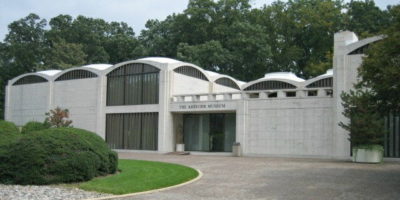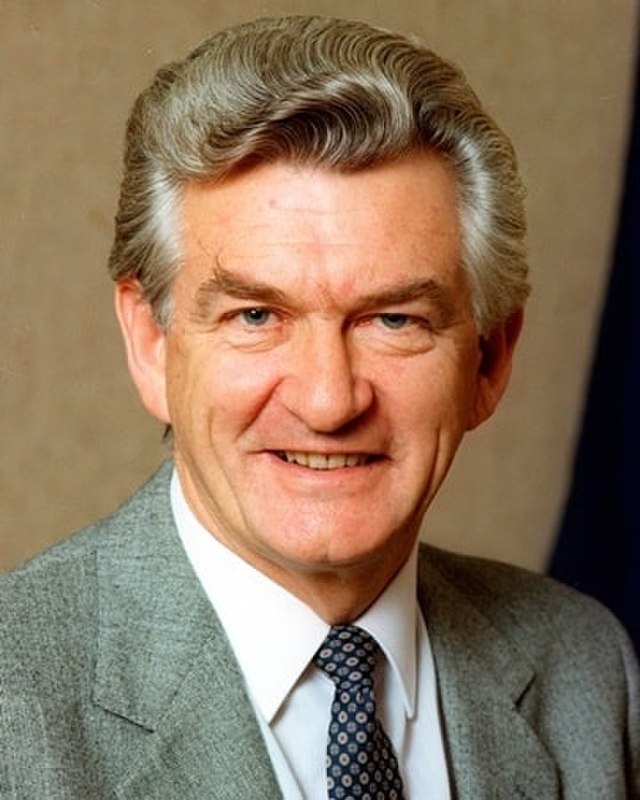
Photo by Wikimedia Commons – Wikimedia
Top 10 Fascinating Facts about Bob Hawke
Bob Hawke was born on 9 December 1929 in the Border town of Australia, South Australia. He was the second child of Arthur Clem Hawke who lived between 1898 to 1989. The father was a congregationalist minister.
The mother was Edith Emily Lee who lived from 1897 to 1979. She was also known as Ellie. Also, she was a school teacher. He did not come from a common family. His uncle, Albert, was the Labor premier of Western Australia between 1953 and 1959.
Hawke’s vision of leadership began in his early years. At fifteen years old, he presciently boasted to his friends that one day, he would become the prime minister of Australia.
However, that came to pass on March 11th, 1983 when he was sworn in as the Prime Minister by Governor-General Ninian Stephen.
In fact, they were able to secure the Australian environment by implementing various projects like drilling for minerals within Antarctica, the construction of the Franklin Dam in Tasmania, and the securing of the Wet Tropics of Queensland.
1. Prophesied He would be Prime Minister
At the age of fifteen, he boasted to his friends that one day, he would become the prime minister of Australia.
2. Prime Minister

Photo by Wikimedia Commons – Wikimedia
Hawke’s leadership skills surprised many people. When he was sworn in as Prime Minister, he immediately announced that Malcolm Fraser’s pre-election concealment of the budget deficit meant that many of labor’s election commitments would have to be deferred.
3. Two-Tier Government
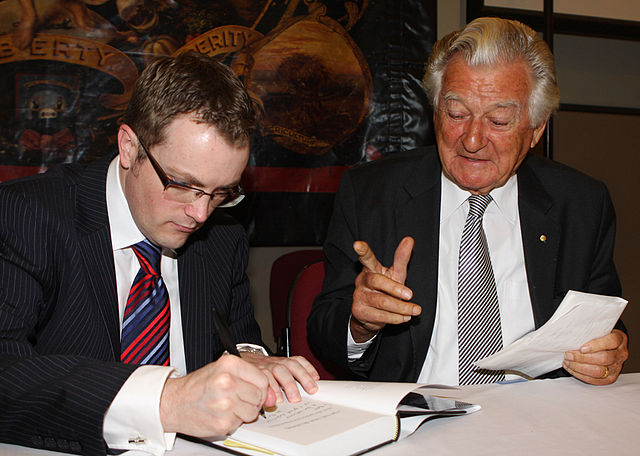
Photo by Wikimedia Commons – Wikimedia
As part of his internal reforms package, Hawke divided the government into two tiers, with only the most senior ministers sitting in the Cabinet.
The Labor caucus was still given the authority to determine who would make up the Ministry, but this move gave Hawke unprecedented powers to empower individual ministers.
4. Political Partnership with Paul Keating
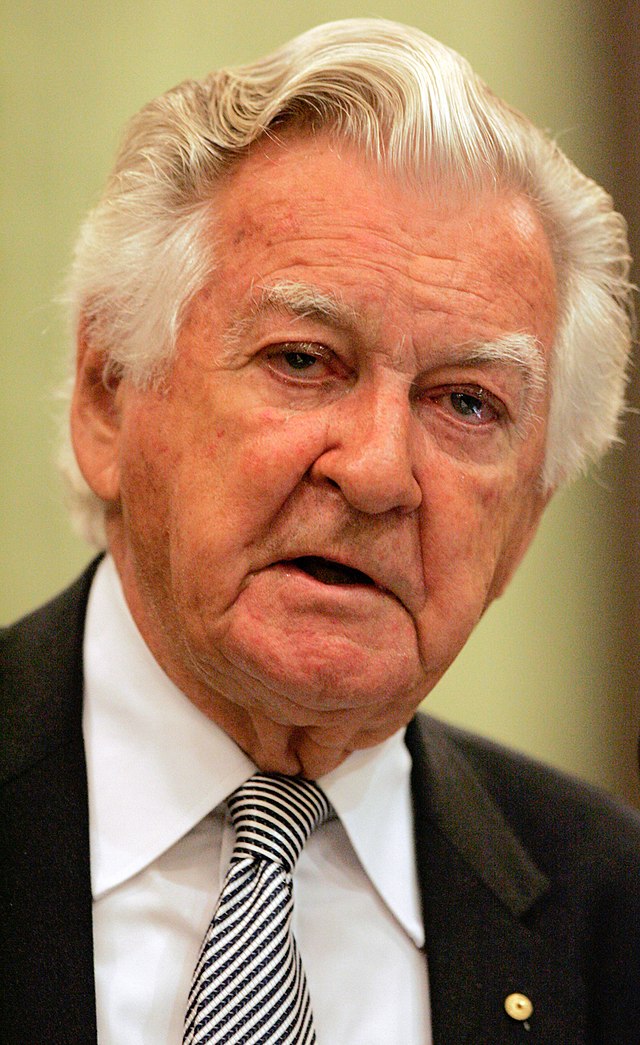
Photo by Wikimedia Commons – Wikimedia
In particular, the political partnership that developed between Hawke and his Treasurer, Paul Keating, proved to be essential to Labor’s success in government, with multiple Labor figures in years since citing the partnership as the party’s greatest ever.
The two men proved a study in contrasts: Hawke was a Rhodes Scholar; Keating left high school early.
Hawke’s enthusiasms were cigars, betting, and most forms of sport; Keating preferred classical architecture, Mahler symphonies, and collecting British Regency and French Empire antiques.
Despite not knowing one another before Hawke assumed the leadership in 1983, the two formed a personal as well as political relationship which enabled the Government to pursue a significant number of reforms, although there were occasional points of tension between the two.
5. Unique Persuasion Leadership Power
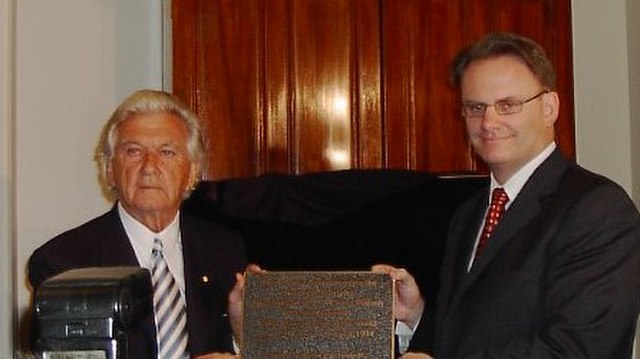
Photo by Wikimedia Commons – Wikimedia
His leadership was unique in that, unlike many of his predecessor leaders, his authority within the Labor Party was absolute.
He was able to persuade MPs to support a substantial set of policy changes that had not been considered achievable by Labor Governments in the past.
Individual accounts from ministers indicated that while Hawke was not often the driving force behind individual reforms, outside of broader economic changes.
He took on the role of providing political guidance on what was electorally feasible and how best to sell it to the public, tasks at which he proved highly successful.
6. A Public Role as Prime Minister
Hawke took on a very public role as Prime Minister, campaigning frequently even outside of election periods, and for much of his time in office proved to be incredibly popular with the Australian electorate.
This is still the case in Australia today. According to AC Nielson’s approval rating, Hawke has a 75% approval.
7. He brought about the Turning Point in Australia History Economically
The Hawke Government oversaw significant economic reforms and is often cited by economic historians as being a “turning point” from a protectionist, agricultural model to a more globalized and services-oriented economy.
According to the journalist Paul Kelly, “the most influential economic decisions of the 1980s were the floating of the Australian dollar and the deregulation of the financial system”.
Although the Fraser Government had played a part in the process of financial deregulation by commissioning the 1981 Campbell Report, opposition from Fraser himself had stalled this process.
Shortly after its election in 1983, the Hawke Government took the opportunity to implement a comprehensive program of economic reform. In the process, this transformed economics and politics in Australia.
8. Revolution in Taxation System
The taxation system was also significantly reformed, with income tax rates reduced and the introduction of a fringe benefits tax and a capital gains tax.
The latter two reforms were strongly opposed by the Liberal Party at the time but were never reversed by them when they eventually returned to office in 1996.
Partially offsetting these imposts upon the business community—the “main loser” from the 1985 Tax Summit according to Paul Kelly—was the introduction of full dividend imputation, a reform insisted upon by Keating.
Funding for schools was also considerably increased as part of this package, while financial assistance was provided for students to enable them to stay at school longer.
The number of Australian children completing school rose from 3 in 10 at the beginning of the Hawke Government to 7 in 10 by its conclusion in 1991.
Considerable progress was also made in directing assistance to the most disadvantaged recipients over the whole range of welfare benefits.
9. Universal Health Care
As Primed minister, he oversaw the enacting of Universal, doubled the number of subsidized childcare places, and began the introduction of occupational superannuation.
More importantly, his government implemented the elimination of poverty traps in the welfare system, increased the real value of the old-age pension, and reintroduced the six-monthly indexation of single-person unemployment benefits.
He established a wide-ranging program for period family support, known as the Family Income Supplement.
During the 1980s, the proportion of total government outlays allocated to families, the sick, single parents, widows, the handicapped, and veterans were significantly higher than under the previous Fraser and Whitlam Governments.
10. Mindful about the Environment
The Hawke Government also drew attention to a series of notable environmental decisions, particularly in its second and third terms.
In 1983, Hawke personally vetoed the construction of the Franklin Dam in Tasmania, responding to a groundswell of protest around the issue.
Hawke also secured the nomination of the Wet Tropics of Queensland as a UNESCO World Heritage Site in 1987, preventing the forests there from being logged.
He later appointed Graham Richardson as Environment Minister, tasking him with winning the second-preference support from environmental parties, something which Richardson later claimed was the major factor in the government’s narrow re-election in the 1990 election.
In the Government’s fourth term, Hawke personally led the Australian delegation to secure changes to the Protocol on Environmental Protection to the Antarctic Treaty.
This ultimately won a guarantee that drilling for minerals within Antarctica would be totally prohibited until 2048 at the earliest. Hawke later claimed that the Antarctic drilling ban was his proudest achievement.
Planning a trip to Paris ? Get ready !
These are Amazon’s best-selling travel products that you may need for coming to Paris.
Bookstore
- The best travel book : Rick Steves – Paris 2023 – Learn more here
- Fodor’s Paris 2024 – Learn more here
Travel Gear
- Venture Pal Lightweight Backpack – Learn more here
- Samsonite Winfield 2 28″ Luggage – Learn more here
- Swig Savvy’s Stainless Steel Insulated Water Bottle – Learn more here
Check Amazon’s best-seller list for the most popular travel accessories. We sometimes read this list just to find out what new travel products people are buying.



